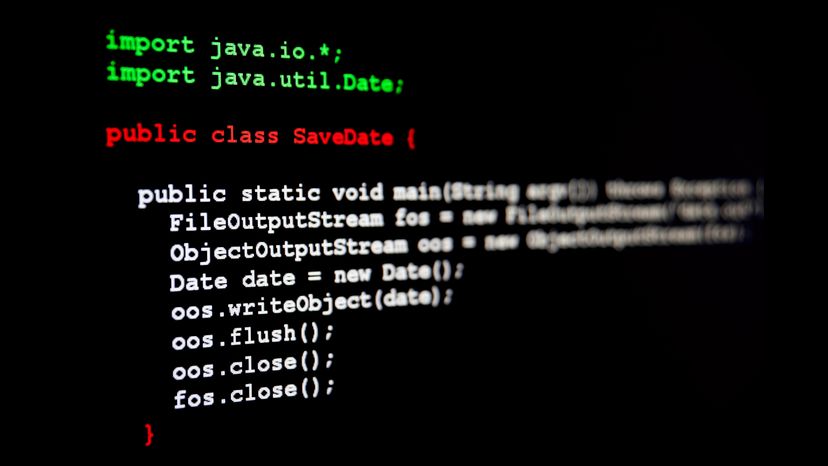The Unstoppable Evolution of Java: A Deep Dive into Modern Performance and Data Strategies
The Java landscape is evolving at an unprecedented pace. Gone are the days of multi-year release cycles; the current six-month cadence delivers a continuous stream of innovation directly from the OpenJDK community and Oracle. The latest Oracle Java news isn’t just about incremental updates; it signals a fundamental shift in the platform’s focus towards elite performance, simplified concurrency, and enhanced developer productivity. This evolution is not happening in a vacuum. The entire Java ecosystem news—from frameworks like Spring and Hibernate to build tools like Maven and Gradle—is rapidly adapting to leverage these powerful new capabilities.
For developers building data-intensive applications, these changes are transformative. Modern applications demand high throughput and low latency, which requires a symbiotic relationship between the application layer and the database. This article explores the most impactful recent advancements in the Java platform, demonstrating how to harness them in conjunction with robust SQL practices to build next-generation enterprise systems. We’ll move beyond the headlines of Java 17 and Java 21 to explore the core themes driving Java’s future, with practical code examples that bridge the gap between JVM innovations and database optimization.
Section 1: The Concurrency Revolution with Project Loom and Virtual Threads
For years, handling high concurrency in Java meant wrestling with complex, error-prone, and resource-heavy thread management. The most significant recent development, a cornerstone of Project Loom news, is the finalization of Virtual Threads. Unlike traditional platform threads, which are heavy wrappers around OS threads, virtual threads are lightweight, managed by the JVM, and designed for I/O-bound tasks like database calls and microservice communication. This is a game-changer for Java concurrency news.
Imagine an e-commerce application that needs to fetch details for multiple products simultaneously. With platform threads, creating thousands of threads would exhaust system resources. With virtual threads, you can create millions without breaking a sweat, leading to simpler code and dramatically improved throughput.
Database Schema Context
Let’s start with a simple database schema for our product catalog. We have a products table that stores essential information. This schema will be the foundation for our Java and SQL examples.
-- DDL for our product catalog table in a PostgreSQL database
CREATE TABLE products (
product_id UUID PRIMARY KEY,
sku VARCHAR(100) NOT NULL UNIQUE,
product_name VARCHAR(255) NOT NULL,
description TEXT,
price NUMERIC(10, 2) NOT NULL,
stock_quantity INT NOT NULL DEFAULT 0,
created_at TIMESTAMP WITH TIME ZONE DEFAULT CURRENT_TIMESTAMP,
updated_at TIMESTAMP WITH TIME ZONE DEFAULT CURRENT_TIMESTAMP
);
-- Add some sample data
INSERT INTO products (product_id, sku, product_name, price, stock_quantity) VALUES
(gen_random_uuid(), 'LAP-MAC-M3-16', 'Modern Laptop Pro M3 16GB', 1499.99, 50),
(gen_random_uuid(), 'MON-DELL-27-4K', 'UltraSharp 27" 4K Monitor', 649.50, 120),
(gen_random_uuid(), 'KEY-LOGI-MXM', 'MX Mechanical Keyboard', 169.00, 300);Harnessing Virtual Threads for Concurrent Data Fetching
Now, let’s see how virtual threads can simplify fetching data for a list of SKUs. We’ll use a plain JDBC connection to illustrate the core concept. The code creates a new virtual thread for each database call. The `ExecutorService` manages these lightweight threads efficiently, allowing all database queries to run concurrently without blocking a precious OS thread for each one. This is a prime example of the latest Java virtual threads news in action.
import java.sql.Connection;
import java.sql.DriverManager;
import java.sql.PreparedStatement;
import java.sql.ResultSet;
import java.sql.SQLException;
import java.util.List;
import java.util.concurrent.Executors;
import java.util.concurrent.Future;
import java.util.ArrayList;
// Record to hold product data, a modern Java feature
record Product(String sku, String name, double price) {}
public class ConcurrentProductFetcher {
private static final String DB_URL = "jdbc:postgresql://localhost:5432/mydatabase";
private static final String USER = "user";
private static final String PASS = "password";
public Product findProductBySku(String sku) {
// This method represents a blocking I/O call
String sql = "SELECT sku, product_name, price FROM products WHERE sku = ?";
try (Connection conn = DriverManager.getConnection(DB_URL, USER, PASS);
PreparedStatement pstmt = conn.prepareStatement(sql)) {
pstmt.setString(1, sku);
ResultSet rs = pstmt.executeQuery();
if (rs.next()) {
return new Product(
rs.getString("sku"),
rs.getString("product_name"),
rs.getDouble("price")
);
}
} catch (SQLException e) {
System.err.println("Database error: " + e.getMessage());
}
return null;
}
public static void main(String[] args) throws Exception {
var skusToFetch = List.of("LAP-MAC-M3-16", "MON-DELL-27-4K", "KEY-LOGI-MXM");
var fetcher = new ConcurrentProductFetcher();
// Use the new virtual thread per task executor
try (var executor = Executors.newVirtualThreadPerTaskExecutor()) {
List<Future<Product>> futures = new ArrayList<>();
for (String sku : skusToFetch) {
// Each task is submitted to run on its own virtual thread
futures.add(executor.submit(() -> {
System.out.println("Fetching " + sku + " on thread: " + Thread.currentThread());
return fetcher.findProductBySku(sku);
}));
}
for (Future<Product> future : futures) {
Product product = future.get(); // Blocks until the result is available
if (product != null) {
System.out.println("Fetched Product: " + product);
}
}
}
}
}Section 2: Modern Java in the Data Layer: Ensuring Integrity with Transactions

While concurrency is crucial for performance, data integrity is paramount for correctness. Database transactions ensure that a series of operations either all succeed or all fail together (atomicity). The Spring Boot news and Hibernate news often highlight improved integration with modern Java features, making transaction management more declarative and robust.
Frameworks like Spring abstract away the boilerplate of manual transaction management (`BEGIN`, `COMMIT`, `ROLLBACK`) through simple annotations. This allows developers to focus on business logic while the framework handles the underlying database communication.
Implementing a Transactional Operation
Consider a scenario where a customer places an order. This involves two steps: creating an `orders` record and updating the stock quantity in the `products` table. These two operations must be atomic. If the stock update fails, the order creation must be rolled back. Spring’s `@Transactional` annotation makes this trivial.
First, let’s define the `orders` table schema.
CREATE TABLE orders (
order_id UUID PRIMARY KEY,
customer_id UUID NOT NULL,
order_date TIMESTAMP WITH TIME ZONE DEFAULT CURRENT_TIMESTAMP,
status VARCHAR(50) NOT NULL
);
CREATE TABLE order_items (
order_item_id UUID PRIMARY KEY,
order_id UUID REFERENCES orders(order_id),
product_id UUID REFERENCES products(product_id),
quantity INT NOT NULL,
price_at_purchase NUMERIC(10, 2) NOT NULL
);Now, here is a Spring Boot service method that encapsulates the business logic. The `@Transactional` annotation tells Spring to wrap this method call in a database transaction. If an unchecked exception (like our `RuntimeException`) is thrown, Spring will automatically issue a `ROLLBACK` command to the database. Otherwise, it will issue a `COMMIT` upon successful completion.
import org.springframework.stereotype.Service;
import org.springframework.transaction.annotation.Transactional;
import jakarta.persistence.EntityManager;
import jakarta.persistence.PersistenceContext;
@Service
public class OrderService {
@PersistenceContext
private EntityManager entityManager;
@Transactional
public void placeOrder(UUID customerId, String productSku, int quantity) {
// Step 1: Find the product and lock the row to prevent concurrent updates
// Using a pessimistic lock ensures data consistency in high-concurrency scenarios.
String findProductSql = "SELECT p FROM Product p WHERE p.sku = :sku";
Product product = entityManager.createQuery(findProductSql, Product.class)
.setParameter("sku", productSku)
.getSingleResult(); // Throws NoResultException if not found, which rolls back
// Step 2: Check if there is enough stock
if (product.getStockQuantity() < quantity) {
throw new RuntimeException("Insufficient stock for product SKU: " + productSku);
}
// Step 3: Update the product stock
int newStock = product.getStockQuantity() - quantity;
product.setStockQuantity(newStock);
entityManager.merge(product);
System.out.println("Updated stock for " + productSku + " to " + newStock);
// Step 4: Create the new order
// In a real app, you'd create Order and OrderItem entities
System.out.println("Creating order for customer " + customerId + "...");
// ... logic to create and persist Order and OrderItem entities ...
System.out.println("Order placed successfully!");
}
}
// Note: This requires proper JPA Entity setup for Product, Order, etc.
// The example focuses on the transactional logic.Section 3: Advanced Performance Tuning: A Symbiosis of JVM and Database
Top-tier Java performance news often revolves around JVM internals like JIT compilers, garbage collectors, and upcoming features from Project Valhalla (value objects) and Project Panama (foreign function interface). While these are critical, they can’t fix an inefficient database query. Optimal performance is achieved when both the Java application and the database are tuned to work together.
A common performance bottleneck is a full table scan, where the database must read every row in a table to find the data it needs. The solution is an index, a special data structure that allows the database to find rows much faster, similar to the index in the back of a book.
Identifying and Fixing a Slow Query
Imagine our `products` table grows to millions of records. A query to find a product by its `sku` (which is a `VARCHAR`) without an index would become progressively slower.
The slow query:

SELECT * FROM products WHERE sku = 'KEY-LOGI-MXM';
A database’s `EXPLAIN` plan for this query would likely show a “Sequential Scan,” indicating it’s reading the whole table. To fix this, we create an index on the `sku` column. Since SKUs are frequently looked up, this is a perfect candidate for indexing.
-- This simple command creates a B-tree index on the sku column.
-- B-tree indexes are efficient for equality (=) and range (>, <) queries.
CREATE INDEX idx_products_sku ON products(sku);
-- After creating the index, running the same query again will be much faster.
-- The database query planner will now choose to use the index.
EXPLAIN ANALYZE SELECT * FROM products WHERE sku = 'KEY-LOGI-MXM';
-- The output of EXPLAIN will now show an "Index Scan using idx_products_sku",
-- indicating a much more efficient data retrieval strategy.This simple SQL optimization can yield orders of magnitude in performance improvement, far more than any micro-optimization in the Java code could achieve for this specific I/O-bound operation. This highlights a key piece of Java wisdom tips news: always profile your application and optimize the biggest bottlenecks first, which often lie at the boundary between the application and the database.
Section 4: The Broader Java Ecosystem: Best Practices and Future Trends
The rapid evolution of the Java platform is mirrored by its vibrant ecosystem. Staying current is not just about adopting the latest JDK; it’s about understanding how the tools and frameworks you use are evolving alongside it.
Testing and Tooling in a Modern World
With features like virtual threads, testing for concurrency becomes more important. The latest JUnit news and Mockito news include better support for testing asynchronous and concurrent code. Build tools are also keeping pace; the latest Maven news and Gradle news showcase improved support for new JDK versions and more efficient dependency management.

Java and the Rise of AI
A fascinating trend in the Java ecosystem news is the emergence of powerful AI and machine learning libraries. Projects like Spring AI and LangChain4j are making it easier than ever to integrate large language models (LLMs) and other AI capabilities into Java applications. These tools often rely on efficient data retrieval and vector databases, reinforcing the need for a solid understanding of both Java performance and data management. This trend dispels any outdated “Java psyop” narratives and proves the platform’s adaptability.
The JVM Landscape
While OpenJDK is the reference implementation, the JVM landscape is diverse. Providers like Azul Zulu, Amazon Corretto, and BellSoft Liberica offer certified builds of OpenJDK, sometimes with commercial support or specialized performance enhancements. This healthy competition, along with the efforts of the Adoptium project, ensures that developers have a wide range of high-quality, production-ready JVMs to choose from, whether they are working on Java SE news, Jakarta EE news (the successor to Java EE), or even specialized editions like Java Micro Edition news.
Conclusion: Embracing the Future of Java
The current era of Java is defined by a relentless pursuit of performance and developer experience. The journey from Java 8 to the modern, feature-rich versions has been transformative. Innovations like virtual threads are fundamentally changing how we write concurrent, scalable applications. At the same time, new language features are making our code cleaner and more expressive.
However, the key takeaway for enterprise developers is that application code is only one part of the equation. A deep understanding of how your application interacts with the database is non-negotiable. By combining the power of modern Java features with time-tested SQL principles like proper indexing and transactional integrity, you can build systems that are not only fast and scalable but also robust and reliable. The best next step is to start experimenting: fire up the latest JDK, connect it to a database, and see for yourself how these new capabilities can revolutionize your workflow and your applications.

